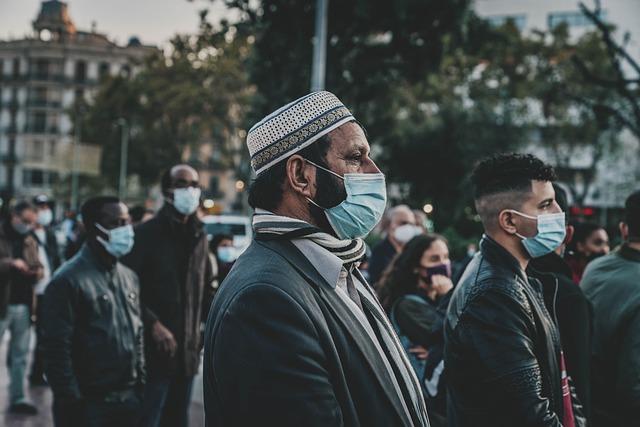In a world increasingly defined by the ebb and flow of people across borders, the dynamics of immigration have become a pivotal aspect of global connectivity and cultural exchange. Among the nations shaping this intricate tapestry is Pakistan, a country rich in history and diversity, which has emerged as a significant player in global mobility. From the bustling streets of Karachi to the serene valleys of Swat, the motivations behind migration from Pakistan are as varied as its landscapes—ranging from economic opportunity and educational pursuits to the search for safety and stability. This article embarks on a comprehensive exploration of the nuanced immigration trends emanating from Pakistan, delving into the socio-economic factors at play, the destinations preferred by Pakistani migrants, and the broader implications of these movements on both the host countries and Pakistan itself. Join us as we uncover the stories, statistics, and trends that illuminate Pakistan’s role in the ever-evolving narrative of global migration.
Understanding the Historical Context of Pakistani Migration Patterns
The migration patterns of Pakistanis have been profoundly influenced by a complex interplay of historical, social, and economic factors. Colonial legacies established early migratory routes, allowing many to move to various parts of the British Empire. Post-partition in 1947, the mass migration shaped the national narrative, affecting demographic distributions and cultural integrations. In the subsequent decades, especially during the 1970s and 1980s, political turbulence and economic challenges compelled many to seek better opportunities abroad. Countries in the Middle East became significant destinations due to labor demands, while Western nations like the UK and the US attracted those seeking academic and professional growth.
In recent years, the factors driving migration have shifted toward education, economic stability, and family reunification. The rise of globalization has paved new pathways, and the increasing presence of the Pakistani diaspora abroad has fostered a culture of transnationalism. The following table illustrates the primary reasons for migration from Pakistan in the last decade, reflecting changing priorities among potential migrants:
| Reason for Migration | Percentage |
|---|---|
| Employment Opportunities | 45% |
| Education | 30% |
| Family Reunification | 15% |
| Political Asylum | 5% |
This historical context reveals that while the motivations for migration continuously evolve, the underlying themes of opportunity and security remain constant. Understanding these patterns not only highlights the individual aspirations of Pakistani migrants but also reflects broader global trends in migration and mobility.

Evaluating Economic Impacts of Pakistani Immigrants on Host Countries
The influx of Pakistani immigrants into various host countries has been a subject of extensive research, highlighting profound economic influences on both local and native populations. Pakistani communities often bring with them a rich tapestry of skills, enabling them to fill critical gaps in labor markets. Several key areas illustrate their contributions:
- Entrepreneurship: Many Pakistani immigrants engage in small business ownership, generating employment opportunities and enriching local economies.
- Remittances: Significant financial transfers back to Pakistan bolster the economy, thereby creating a direct link between host and home countries.
- Skill Development: Immigrants often enhance their technical and professional skills in host countries, leading to knowledge transfer upon return, which can foster regional growth.
However, the economic implications are not solely beneficial; they often stir debates around resource allocation and social integration. Important factors to consider include:
- Job Competition: The arrival of skilled workers may intensify competition for employment, impacting local populations.
- Cultural Integration: As communities diversify, the challenge of integrating different cultural practices can lead to social tensions or synergy.
- Fiscal Impact: Immigrants may contribute to public services through taxes, though this can sometimes lead to perceptions of strain on local resources.
| Economic Aspect | Impact |
|---|---|
| Entrepreneurship | Creates jobs and enhances local economies |
| Remittances | Strengthens home economy, promotes development |
| Job Market | Can lead to competition; may lower wages |
| Cultural Diversity | Enriches local culture but may cause friction |

Navigating Challenges and Opportunities in Global Mobility for Pakistan
As Pakistan seeks to enhance its presence in the global mobility landscape, navigating the intricate web of challenges and opportunities has become paramount. One of the most pressing challenges is the misalignment of immigration policies with the global standards. The evolving geopolitical landscape and regulatory hurdles often hinder smooth transitions for professionals seeking opportunities abroad. Furthermore, the lack of comprehensive data on skilled migrants limits effective policymaking. However, opportunities abound in the form of seasoned talent with diverse skills ready to contribute internationally, which can bolster both economic growth at home and strengthen Pakistan’s global partnerships.
To effectively leverage its human capital, Pakistan must focus on fostering a culture of innovation and skill development. Initiatives aimed at collaboration between the government and educational institutions can facilitate this transition. Additionally, creating a supportive ecosystem for returning migrants can help in reintegrating talent and sharing knowledge with local communities. Key elements to consider include:
- Enhancing bilateral agreements with countries that are receptive to skilled migrants.
- Establishing mentorship programs that connect local professionals with expatriates.
- Promoting entrepreneurship among returnees to stimulate economic development.

Strategic Recommendations for Enhancing Pakistans Position in Global Migration Networks
To enhance its position in global migration networks, Pakistan should focus on several strategic initiatives. First, developing bilateral agreements with key countries can facilitate easier migration pathways for Pakistani expatriates, allowing for smoother transitions and integration. Second, leveraging technology for skill matching between Pakistani labor and international job markets can maximize employment opportunities. Establishing a robust online platform to connect skilled workers with employers abroad will not only streamline the process but also enhance Pakistan’s reputation as a source of quality labor.
Furthermore, increasing investment in education and vocational training is crucial to prepare the workforce for international demand. Engaging with communities abroad to understand their needs and preferences will also help tailor training programs effectively. Collaboration with international organizations to promote rights and welfare of migrants will enhance Pakistan’s standing in the global arena. The following table summarizes key action areas to focus on:
| Action Area | Description |
|---|---|
| International Agreements | Negotiating with key nations for easier migration |
| Technology Utilization | Developing platforms for skill-job matching |
| Education Reforms | Investing in skill development and vocational training |
| Community Engagement | Building connections with overseas Pakistani communities |
| Rights Advocacy | Working with organizations to support migrant rights |
The Conclusion
As we draw the curtain on our exploration of immigration trends and Pakistan’s role in the intricate tapestry of global mobility, it becomes clear that the narrative is far from static. Rather, it is a dynamic interplay of aspirations, challenges, and opportunities that reflect the resilience and adaptability of individuals and communities.
From the bustling streets of Lahore to the thriving diaspora across continents, the people of Pakistan contribute richly to the global mosaic. Their stories—marked by determination, innovation, and a quest for better opportunities—encapsulate both the local and global dimensions of migration.
In understanding Pakistan’s position in these evolving trends, we not only shed light on the current realities but also hint at future possibilities. The interplay of economic factors, policy shifts, and social dynamics suggests that the road ahead will require both careful navigation and bold vision.
As we consider the future of global mobility, let us remain open to the lessons learned from Pakistan’s diverse experiences. For in the stories of those who journey across borders, we find reflections of a shared human experience—one that transcends boundaries and connects us all in the search for belonging, identity, and opportunity.



